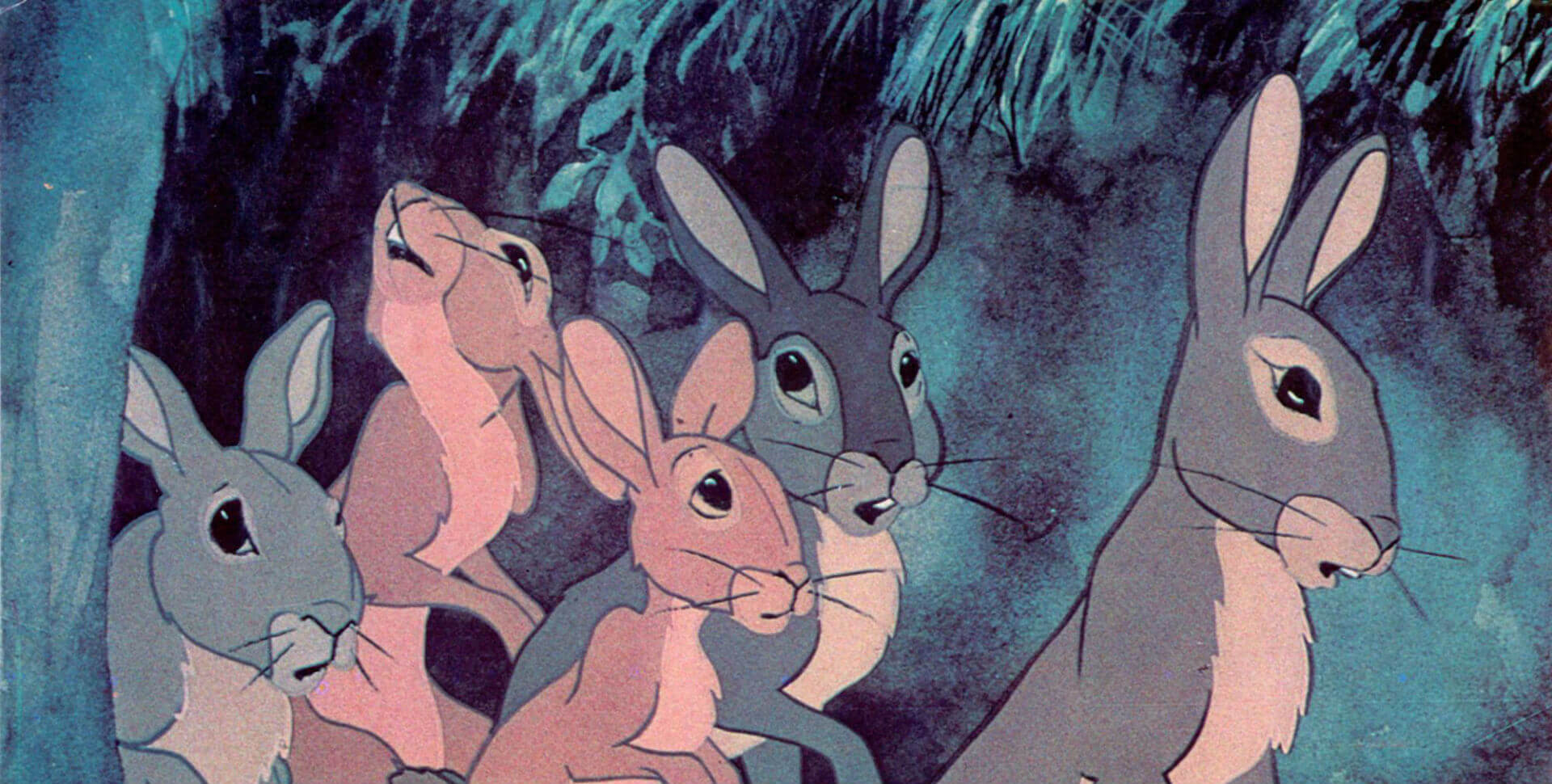Watership Down [1978] has already joined the ranks as one of cinema’s most admirable animations. The British adaptation of Richard Adams’ novel of the same name follows a group of rabbits as they try to venture out into the countryside after one of them has a vision of impending doom upon their current warren. Hazel (John Hurt), Fiver (Richard Briers), Bigwig (Michael Graham Cox), and their friends must face all the hidden dangers and obstacles that lurk in the wild as they search for a new home.
Prince with a Thousand Enemies: The film beautifully translates the mythology that Adams crafted in his novel within a distinctly animated sequence at the beginning. Like ancient Lepus hieroglyphics, the story of the god Frith and the rabbit prince El-ahrairah takes shape in a stunning visual scene. Once the main narrative starts, the animation style shifts to that of its classic watercolor appearance, and the treacherous quest of Hazel’s warren is documented. What provides a sharp contrast to the more suspenseful moments of the film is the soft, pastel-colored scenery that resembles a children’s storybook. With such a seemingly sweet disposition, it’s no wonder that casual viewers might be caught off guard at some of the violence that takes place between the characters.
Bright Eyes: One of the most notable aspects of Watership Down is its heavy themes pertaining to the inevitability of death. There is even a powerful montage in the middle of the film scored by Art Garfunkel’s “Bright Eyes” set amid a psychedelic kaleidoscope of silhouetted images to emphasize the end of life. Having such a serious topic exude from an animated movie with small, furry protagonists may be difficult to watch initially, but the artful execution of these concepts is sure to leave a tearful yet heartfelt impression on its audience.
A tale that is as precious as it is poignant, Watership Down will definitely captivate even more generations to come with its touching representation of life and death.

Watch Watership Down Now
